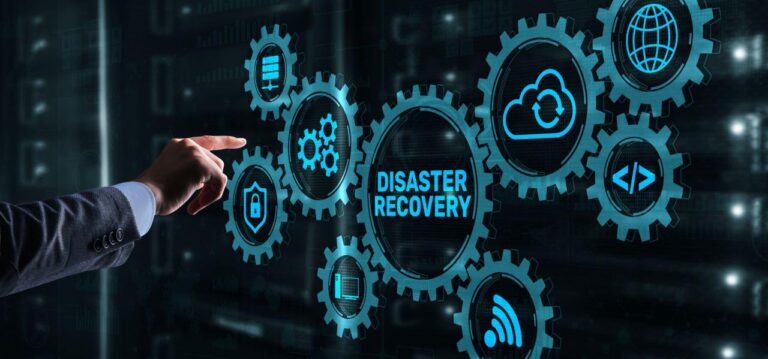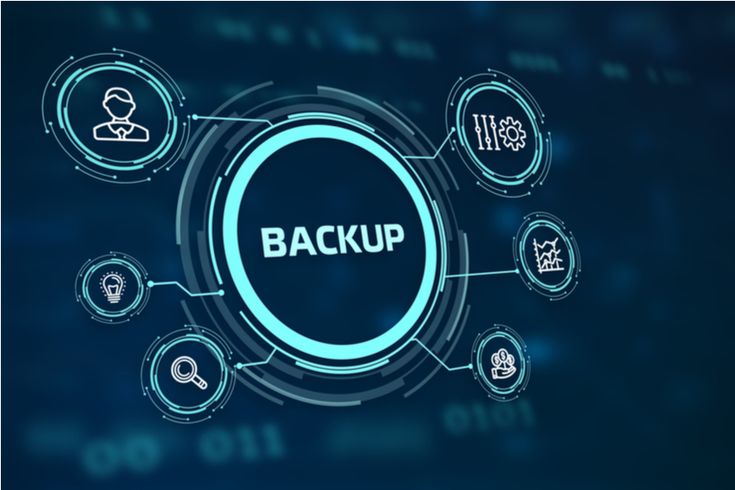In today’s hyper-connected digital landscape, business continuity isn’t just a buzzword; it’s the lifeline of any successful enterprise. From small startups to multinational corporations, the ability to withstand unexpected disruptions and quickly resume operations is paramount. This is where Disaster Recovery (DR) steps in – a meticulously planned and executed strategy designed to minimize downtime, prevent data loss, and safeguard your organization’s future. It’s more than just backing up data; it’s about building an unbreakable shield against the unforeseen, ensuring your business can weather any storm.
The reality is, disasters come in many forms. They’re not always the dramatic, natural calamities we see on the news. They can be as subtle as a power outage in a single office, as insidious as a cyberattack, or as commonplace as human error. Each of these events, regardless of its scale, has the potential to bring an organization to its knees, leading to significant financial losses, reputational damage, and even complete operational shutdown. A robust DR plan isn’t a luxury; it’s an absolute necessity for survival in the modern business world.
The Evolving Threat Landscape: Why DR is More Critical Than Ever
The digital age has brought unprecedented opportunities, but it has also ushered in a new era of vulnerabilities. The sheer volume of data businesses generate and rely upon has exploded. This data, often mission-critical, resides in complex IT infrastructures that are increasingly distributed across on-premise, cloud, and hybrid environments. This complexity, while offering flexibility, also creates more points of failure and makes DR planning more intricate.
Furthermore, the nature of threats has diversified. While natural disasters like floods, earthquakes, and fires remain a concern, man-made threats are becoming increasingly prevalent and sophisticated.
A. Cyberattacks: Ransomware, malware, phishing, and denial-of-service (DoS) attacks are no longer isolated incidents. They are a daily onslaught, constantly evolving and targeting organizations of all sizes. A successful cyberattack can encrypt critical data, shut down systems, and extort significant sums, making a swift and effective recovery plan indispensable.
B. Human Error: Despite advanced technology, humans remain one of the biggest vulnerabilities. Accidental data deletion, misconfigurations, and unintentional breaches can lead to significant disruptions. DR plans must account for these internal mistakes and provide mechanisms for swift reversal or recovery.
C. Hardware Failures: Even the most robust hardware can fail. Server crashes, disk failures, and network equipment malfunctions can bring operations to a halt. Redundancy and rapid recovery protocols are essential to mitigate the impact of such failures.
D. Software Malfunctions and Corruptions: Bugs in software, corrupt databases, or compatibility issues after updates can render systems unusable. A well-defined DR strategy includes testing and rollback procedures to address these software-related issues.
E. Power Outages: While often localized, prolonged power outages can severely impact businesses reliant on continuous operation. Backup power solutions and off-site DR capabilities become vital in such scenarios.
F. Supply Chain Disruptions: In an interconnected world, a disruption to a key supplier or service provider can cascade through your operations. While not a direct IT disaster, it underscores the need for business continuity planning that considers external dependencies.
Understanding these multifaceted threats is the first step toward building aolithic resilient DR strategy that protects your assets and ensures your ongoing operational integrity.
Key Components of a Comprehensive Disaster Recovery Plan
A truly effective DR plan is a living document, not a static checklist. It requires continuous review, testing, and adaptation. While the specifics will vary depending on your organization’s size, industry, and risk tolerance, several core components are universally critical.
I. Risk Assessment and Business Impact Analysis (BIA)
Before you can plan for recovery, you must understand what you’re recovering from and what the impact of not recovering would be.
A. Identifying Potential Threats: This involves brainstorming or using frameworks to list all possible disaster scenarios relevant to your organization, from natural disasters to cyberattacks and human error.
B. Assessing Vulnerabilities: For each identified threat, determine your organization’s susceptibility. Do you have single points of failure? Are your systems outdated? What are the weaknesses in your current security posture?
C. Determining Impact: This is the core of the BIA. For each critical business function and IT system, quantify the impact of downtime. This includes: 1. Financial Losses: Lost revenue, regulatory fines, contractual penalties. 2. Operational Disruption: Inability to process orders, communicate with customers, or manufacture products. 3. Reputational Damage: Loss of customer trust, negative media attention. 4. Legal and Compliance Implications: Failure to meet regulatory requirements (e.g., GDPR, HIPAA).
D. Defining Recovery Objectives: The BIA helps establish two critical metrics: 1. Recovery Time Objective (RTO): The maximum tolerable downtime for a business function or IT system after a disaster. How quickly do you need to be up and running? For some critical systems, this might be minutes; for others, hours or days. 2. Recovery Point Objective (RPO): The maximum amount of data your organization can afford to lose. This determines how frequently you need to back up your data. An RPO of zero means no data loss is acceptable, requiring continuous data replication.
II. Data Backup and Replication Strategies
The foundation of any DR plan is robust data protection. Without your data, recovery is impossible.
A. Regular Backups: Implement a consistent and automated backup schedule for all critical data. 1. Full Backups: A complete copy of all data. 2. Incremental Backups: Only data that has changed since the last backup. 3. Differential Backups: All data that has changed since the last full backup.
B. Off-site Storage: Backups should always be stored off-site, away from the primary data center, to protect against localized disasters. Cloud storage has become an increasingly popular and cost-effective option for off-site backups.
C. Data Replication: For mission-critical systems with low RPOs, data replication is essential. 1. Synchronous Replication: Data is written to both the primary and secondary locations simultaneously. This offers zero data loss (RPO=0) but introduces latency. 2. Asynchronous Replication: Data is written to the primary location first, then asynchronously replicated to the secondary. This allows for higher distances and less latency but may result in a small amount of data loss in a disaster.
D. Data Versioning: Maintain multiple versions of your data backups. This protects against data corruption that might not be immediately apparent, allowing you to roll back to a clean version from an earlier point in time.
III. Recovery Site Options
Where will your operations resume if your primary site is unavailable?
A. Hot Site: A fully equipped, ready-to-use duplicate of your primary data center. It has all hardware, software, and data in place, allowing for near-instantaneous cutover. This offers the lowest RTO but is the most expensive option.
B. Warm Site: A partially equipped site with necessary hardware but no active data or applications. Data needs to be restored from backups, and applications need to be configured. Offers a moderate RTO and cost.
C. Cold Site: A basic facility with power and cooling, but no hardware or software. Everything needs to be brought in and set up. This is the least expensive option but has the longest RTO.
D. Cloud-Based DR: Leveraging public or private cloud infrastructure for recovery. This offers flexibility, scalability, and often a pay-as-you-go model. You can replicate your on-premise environment to the cloud, spinning up virtual machines only when a disaster strikes. This is increasingly popular due to its cost-effectiveness and rapid deployment capabilities.
E. Hybrid DR Solutions: Combining elements of on-premise and cloud-based strategies to create a flexible and cost-effective recovery solution.
IV. Recovery Procedures and Documentation
A DR plan is only as good as its execution. Clear, concise, and accessible documentation is vital.
A. Step-by-Step Recovery Playbooks: Detailed instructions for every aspect of the recovery process, from initial disaster declaration to system restoration and verification. These playbooks should be comprehensive enough for someone unfamiliar with the systems to follow.
B. Roles and Responsibilities: Clearly define who is responsible for each task during a disaster. Assign primary and secondary contacts for every role to ensure coverage.
C. Communication Plan: How will you communicate with employees, customers, partners, and stakeholders during a disaster? Include pre-written messages, emergency contact lists, and designated communication channels.
D. Contact Lists: Up-to-date contact information for all relevant personnel, vendors, emergency services, and key stakeholders.
E. System Inventory: A comprehensive list of all critical IT assets, including hardware specifications, software versions, network configurations, and dependencies.
F. Manual Procedures: Documenting any manual processes that must be performed if automated systems are down.
V. Regular Testing and Maintenance
A DR plan gathering dust is useless. Regular testing is non-negotiable.
A. Scheduled Drills: Conduct regular, realistic disaster recovery drills. These can range from tabletop exercises (walking through the plan) to full-scale simulations where systems are actually failed over to the recovery site.
B. Post-Test Review: After each test, conduct a thorough review to identify weaknesses, bottlenecks, and areas for improvement. Update the plan based on lessons learned.
C. Plan Updates: The DR plan must be a living document. Update it whenever there are significant changes to your IT infrastructure, business processes, or personnel. This includes new applications, system upgrades, or changes in data criticality.
D. Technology Changes: As technology evolves, so too should your DR strategy. Keep abreast of new DR solutions, cloud capabilities, and data protection technologies.
VI. Team Training and Awareness
A well-trained team is crucial for effective disaster response.
A. Regular Training Sessions: Train all relevant personnel on their roles and responsibilities within the DR plan. Ensure they understand the procedures and have access to the necessary documentation.
B. Awareness Programs: Educate employees about the importance of DR, common threats (like phishing), and their role in preventing and responding to incidents. A security-aware workforce is your first line of defense.
C. Cross-Training: Ensure multiple team members are trained on critical tasks to avoid single points of failure in personnel.
The Role of Cloud Computing in Modern Disaster Recovery
Cloud computing has revolutionized DR by offering unparalleled flexibility, scalability, and cost-effectiveness. For many organizations, the traditional approach of maintaining a costly secondary data center is no longer viable or necessary.
A. Cost Efficiency: Instead of investing in expensive hardware and infrastructure for a dormant recovery site, businesses can leverage the cloud’s pay-as-you-go model. You only pay for the resources you consume during testing or actual disaster events.
B. Scalability: Cloud environments can scale up or down based on demand. In a disaster, you can quickly provision the necessary resources to restore critical systems without being limited by physical hardware.
C. Geographic Diversity: Cloud providers typically have data centers in multiple regions, allowing you to easily replicate data to geographically distinct locations, providing robust protection against localized disasters.
D. Simplified Management: Many cloud providers offer managed DR services, abstracting away the complexities of infrastructure management and allowing your IT team to focus on core business operations.
E. Faster Recovery Times: Cloud-based DR solutions often enable faster RTOs due to automated replication, rapid provisioning of virtual machines, and pre-configured environments.
While cloud DR offers significant advantages, it’s crucial to choose a reputable cloud provider, understand their shared responsibility model for security, and ensure your data residency and compliance requirements are met.
Building a Culture of Resilience: Beyond Technology
While technology forms the backbone of disaster recovery, true business resilience extends beyond technical solutions. It involves fostering a culture where continuity is ingrained in every aspect of the organization.
A. Executive Buy-In: DR initiatives require significant investment and commitment. Strong support from senior leadership is essential to allocate resources, prioritize planning, and ensure the plan is integrated into overall business strategy.
B. Regular Review and Audit: Beyond testing, conduct periodic audits of your DR plan and its implementation. Ensure compliance with internal policies, industry regulations, and best practices.
C. Integration with Business Strategy: DR should not be an afterthought. It must be a fundamental component of your overall business strategy, influencing architectural decisions, vendor selections, and operational procedures.
D. Third-Party Vendor Management: Understand the DR capabilities of your critical third-party vendors and ensure their plans align with your RTOs and RPOs. Include DR clauses in contracts.
E. Continuous Improvement: Treat DR as an ongoing process of continuous improvement. Learn from every test, every incident (even minor ones), and continuously refine your strategies to adapt to evolving threats and technologies.
The Investment Pays Off: Tangible Benefits of Robust DR
While implementing a comprehensive DR plan requires an upfront investment of time and resources, the returns far outweigh the costs.
A. Minimized Downtime and Data Loss: The most direct benefit is significantly reducing the duration of outages and the amount of lost data, directly impacting financial performance and customer satisfaction.
B. Protected Revenue and Profitability: By ensuring continuous operations, DR helps maintain sales, service delivery, and revenue streams, safeguarding your bottom line.
C. Enhanced Reputation and Customer Trust: Businesses that can quickly recover from disruptions demonstrate reliability and professionalism, building trust with customers, partners, and stakeholders.
D. Compliance with Regulations: Many industries have strict regulatory requirements regarding data protection and business continuity (e.g., PCI DSS, ISO 27001). A robust DR plan helps ensure compliance and avoids hefty fines.
E. Competitive Advantage: In a marketplace where uptime is often a differentiator, a superior DR capability can give your business a significant edge over competitors.
F. Peace of Mind: Knowing your business is prepared for the worst provides invaluable peace of mind for business owners, executives, and employees. It allows them to focus on innovation and growth rather than constantly worrying about potential disruptions.
In conclusion, Disaster Recovery is no longer just an IT function; it’s a strategic imperative that underpins the very existence and success of any modern enterprise. By meticulously planning, consistently testing, and continuously improving your DR capabilities, you are not just preparing for the worst-case scenario; you are actively building an unbreakable, resilient, and future-proof business. Embrace the challenge, invest in the solution, and secure your place in the ever-evolving digital landscape.














